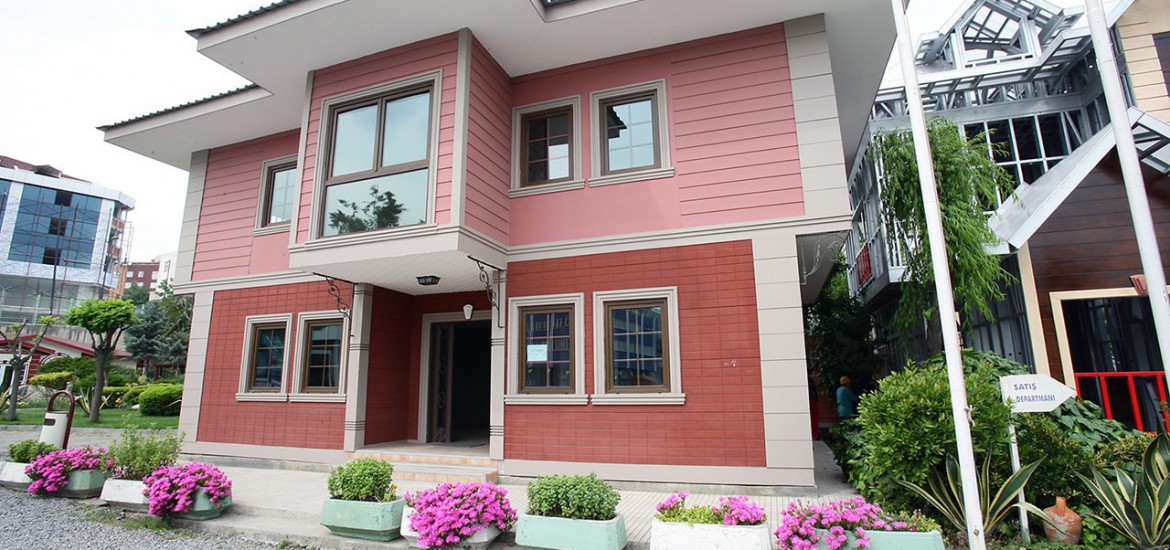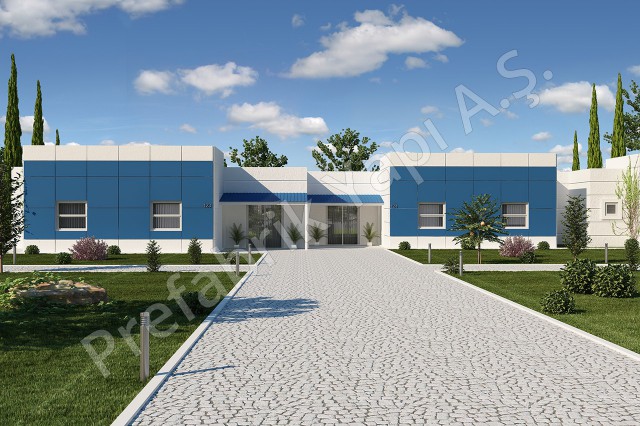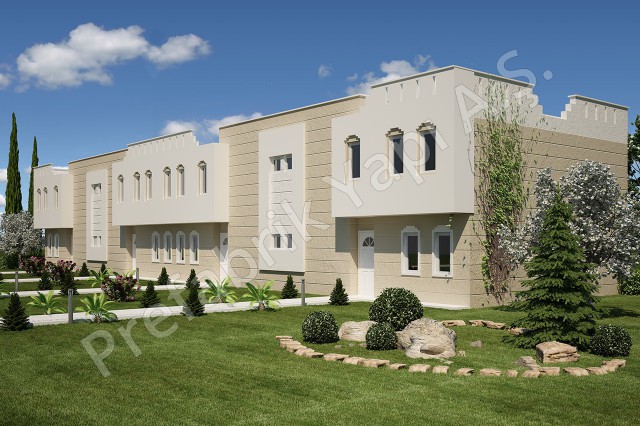Light Steel House
Single Storey, Duplex and Multi-storey Light Steel HousesLight Steel House construction is gaining popularity worldwide due to its durability, modern design flexibility, and rapid installation advantages. These houses, produced using high-quality galvanized steel, are both sustainable and cost-effective. Whether for residential, commercial, or temporary housing solutions, light steel frame structures offer customizable options for various needs. This article explores everything from types and benefits to prices and essential considerations when choosing a light steel home.
Light Steel House - Standard Plans
What Is A Light Steel House?
A light steel house is a modern construction system that utilizes galvanized thin-walled steel profiles instead of traditional building materials such as concrete or wood. These steel profiles are designed and manufactured through precise engineering and then assembled on-site. This system is known for its strength, lightweight nature, and resistance to environmental conditions. The structure can accommodate various architectural styles while maintaining superior performance in thermal insulation and seismic resistance.
In comparison to traditional housing methods, light steel housing provides a faster construction timeline and greater control over quality. Since most parts are prefabricated in factories, errors during assembly are minimized. This allows for greater efficiency and reduced labor costs. The result is a structurally reliable and visually modern building solution suitable for diverse geographical regions and climates.
Types Of Light Steel Houses
Modern construction technologies enable the creation of various types of light steel houses, each offering different design benefits and suitable for varying user needs. The type of house selected depends on lifestyle requirements, land size, and aesthetic preferences. From single-family dwellings to modular courtyard layouts, the design flexibility of light steel structures stands out as a significant advantage.
In this section, we explore two popular types of light steel house designs: Single Storey Twin Houses and Lined Courtyard Houses. These two models highlight the architectural versatility and smart space usage that steel frame technologies can offer.
Single Storey Twin Houses
Single Storey Twin Houses offer a practical solution for urban and suburban housing demands. These homes consist of two adjacent units with mirrored or symmetrical layouts, often sharing a wall. They are an efficient use of land and materials, making them a popular option for families or small housing developments. With a focus on affordability and simplicity, they make excellent starter homes or investment properties.
Lined Courtyard Houses
Lined Courtyard Houses are designed around an open central courtyard, combining indoor comfort with outdoor living. This layout is especially suited for regions with warm climates, as it promotes natural ventilation and lighting. The steel frame allows for expansive glass facades and modern architectural lines. These houses emphasize privacy while encouraging interaction with nature, making them ideal for family living or vacation homes.
Key Features Of Light Steel Houses
Light steel houses are characterized by several distinguishing features that set them apart from conventional construction methods. One of the most important is their resistance to natural disasters. Steel structures offer excellent earthquake resistance and perform well in harsh weather conditions. Additionally, these homes are termite-proof and less susceptible to mold and moisture-related issues.
Another key feature is the precision of their design. Light steel house models are manufactured to exact specifications, which ensures minimal waste and optimal resource efficiency due to computer-aided engineering and prefabrication. The modular components are easily transportable and can be installed quickly, reducing total construction time. This results in faster project turnover and earlier occupancy for homeowners.
Light Steel House Construction Process
The light gauge steel house construction process begins with a detailed architectural and engineering plan tailored to the client’s needs. Once finalized, the steel frame components are produced in a controlled factory environment using advanced machinery. This prefabrication process ensures that each component fits perfectly, eliminating on-site modifications and reducing labor time.
Following fabrication, the components are delivered to the construction site for assembly. The frames are mounted onto a prepared foundation, after which insulation panels, interior and exterior cladding, and roofing systems are added. The final stage includes the installation of doors, windows, plumbing, and electrical systems. The result is a fully functional home built in a fraction of the time required by traditional methods.
Advantages Of Light Steel Houses
Choosing a light steel house offers multiple advantages that go beyond aesthetics and speed. Firstly, these homes are eco-friendly. Steel is a recyclable material, and the prefabrication process significantly reduces on-site waste. Additionally, steel-framed houses often feature improved energy efficiency through better insulation materials, contributing to lower energy bills.
Secondly, the longevity and structural integrity of these homes are unique. With proper maintenance, steel structures can last for decades without significant degradation. They are also resistant to fire, pests, and rot. Their adaptability to different design styles and terrains means they can be customized to fit various cultural and environmental contexts. Overall, they offer a smart long-term investment.
Common Applications Of Light Steel Houses
Light steel prefab house technology is widely applied in various sectors beyond residential housing. In addition to family homes, these structures are used in emergency shelter projects, temporary offices, and worker accommodation in construction sites. Their quick assembly makes them ideal for situations where time and durability are critical.
Another significant application is in tourism. Resorts and holiday parks are increasingly turning to light steel housing solutions to create sustainable, stylish, and low-maintenance accommodation units. Their modular nature also makes them suitable for expanding existing buildings or creating portable homes for different terrains and purposes. Their growing adoption reflects their versatility and modern appeal.
Light Steel House For Sale
The increasing demand for modern, efficient, and sustainable living spaces has led to a rise in the availability of light steel houses for sale. These houses are now offered by a wide range of manufacturers and construction firms, often in pre-designed models or customizable layouts. Buyers can choose between prefabricated packages or completely tailor-made designs depending on their needs and budget.
When considering a light steel house for sale, it’s essential to evaluate the supplier’s reputation, material standards, and included services such as transportation, assembly, and post-sale support. Many companies also offer turnkey solutions where the house is delivered ready-to-use. This purchasing model allows for fast ownership and reduced planning complications compared to conventional real estate transactions.
Light Steel House Pricing
Light steel frame house prices can vary significantly based on size, design complexity, location, and included features. On average, these homes are more cost-efficient than traditional construction in the long run, primarily due to lower labor costs, reduced construction times, and minimal material waste. Prices may also fluctuate based on the thickness and quality of the steel used in the framing.
While entry-level light steel house cost options are available for small single-story units, more elaborate models with high-end finishes or multi-story designs come at a premium. Buyers should also factor in additional costs like land preparation, permits, and utility connections. Nonetheless, the predictable pricing and reduced timeline of these houses make them financially appealing for individual homeowners and developers alike.
Things To Consider Before Buying A Light Steel House
Before investing in a light steel house, there are several key points to evaluate to ensure the choice aligns with your long-term goals. First, assess the climate of the location, as insulation and ventilation will need to be tailored to regional conditions. Understanding zoning laws and obtaining local construction permits is also crucial to avoid delays or legal complications.
Another important factor is evaluating different light steel house models and their compatibility with your lifestyle. Consider the layout, the number of rooms, storage capacity, and future expansion potential. Lastly, confirm the experience of the builder or supplier, their compliance with international standards, and the availability of after-sales service. A thoughtful, informed decision will maximize satisfaction and property value.
Maintenance And Durability Of Light Steel Houses
One of the strongest advantages of light steel frame houses is their low maintenance requirement and impressive durability. Steel does not warp, crack, or shrink like wood, which means less need for structural repairs over time. Additionally, these homes are less vulnerable to termites, mold, and fire, ensuring longevity even in challenging environments.
Routine maintenance primarily involves periodic inspections of joints, protective coatings, and seals around windows and doors to prevent moisture entry. In areas with heavy rain or snow, it’s essential to clear drainage systems and inspect roofing. Thanks to high-quality materials and precision engineering, housing units steel framed light are built to endure for decades with minimal upkeep, making them ideal for busy homeowners or rental property investors.



